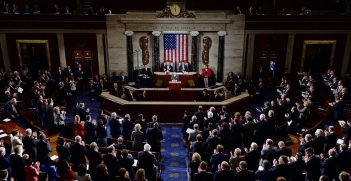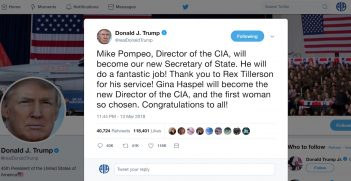BRICS Summit: Continued Constant Commitment

The BRICS Summit in Johannesburg last week took place in a global economic and political landscape greatly destabilised by the Trump Administration. Despite difficulties, the BRICS grouping remains the most important political grouping without Western participation.
Last week, the Global South grouping BRICS – Brazil, Russia, India, China, and South Africa – held their 10th Annual Summit hosted by South African President Cyril Ramaphosa in Johannesburg, South Africa.
The BRICS grouping was initially conceived as an investment strategy by Goldman Sachs economist Jim O’Neill in 2001, then referring to the BRICs: Brazil, Russia, India, and China. Regular meetings between the BRICs began in 2006 and the first BRICs Summit occurred in 2009. South Africa joined the grouping in 2010.
Over the past decade, the Declaration signed and released at the end of each Summit has outlined the BRICS’ year ahead, increasingly formalising the grouping and establishing cooperative mechanisms.
The BRICS Summit Declarations matter. The BRICS Information Centre, operating out of the University of Toronto, provides Compliance Assessments of the Declarations. The Assessments reveal high average levels of compliance on macroeconomic policy, financial regulation, information and communication technologies and food and agriculture between 2011 and 2017. Even The Economist, long sceptical of the grouping, grudgingly acknowledges BRICS compliance at an average of 77 per cent, comparable to G7 commitments over the past decade.
Between 2011 and 2013, Declarations emphasised shared prosperity and global security, and the 2014 Fortaleza Declaration led to the establishment of the BRICS New Development Bank and Contingent Reserve Arrangement, smaller-scale equivalents of the World Bank and International Monetary Fund. The 2015 to 2017 Summits highlighted the benefits reaped from strong partnerships and collective solutions.
The 2018 Johannesburg Declaration, titled ‘BRICS in Africa: Collaboration for Inclusive Growth and Shared Prosperity in the 4th Industrial Revolution’, follows past trends.
First, it calls for strengthening multilateral engagement through the United Nations system and Paris Climate Agreement, while arguing for the reformation of existing multilateral structures to better reflect 21st century power dynamics, i.e., the status of emerging economies.
Second, it recommends consolidating BRICS cooperation on international peace and security, with an emphasis on Afghanistan and Syria and the importance of maintaining the Joint Comprehensive Plan of Action (JCPOA) on Iran’s nuclear programme.
Third, it advocates building partnerships for global economic recovery and highlights the potential of trade and information and communication technologies to foster inclusive growth.
Fourth, it encourages people-to-people cooperation in sports, film, education and tourism, demonstrating a normative attempt to improve cultural communication and interaction to mitigate many of the divergences between the BRICS countries.
In addition to the annual Declaration, each Summit offers the host country the opportunity to propose measures to further cooperative bonds. South Africa proposed a Working Group on Peacekeeping, a Vaccine Research Centre, a BRICS Gender and Women’s Forum, and a BRICS Tourism Track of Cooperation.
Further, preceding the 2018 Summit were a network of meetings conducted in June and July, including the National Security Advisors Meeting on 28 and 29 June, the Science, Technology and Innovation Ministerial Meeting on 2 and 3 July and the BRICS Governance Seminar also on 2 July among others. The meetings focused on youth outreach and empowerment along with culture and heritage programmes. These smaller meetings identify strategic areas of cooperation and lay much of the groundwork for the Summit.
The Summit also saw individual BRICS leaders strengthening ties with representatives from attending countries, as Indian Prime Minister Narendra Modi demonstrated by holding bilateral meetings with the presidents of Argentina and Angola to boost energy and agricultural relations.
While the outcome of the Summit itself was unsurprising, the global environment in which it occurred is not. The presidency of Donald Trump has greatly destabilised traditional alliances and American-led multilateralism. Much of the content of the 2018 Declaration responded to President Trump’s rejection of a rules-based international order, emphasising the BRICS commitment to stability and predictability by advocating the Paris Climate Agreement, JCPOA, World Trade Organisation trade agreements, and collaborative economic and security initiatives led by the United Nations. Chinese President Xi Jinping clearly stated at the Summit that there were ‘no winners’ in trade wars and, on 6 July, BRICS trade ministers responded with hostility to ‘knee-jerk’ protectionist policies.
This, of course, is not to suggest clear cohesion among the BRICS. While three of the BRICS – China, India, and Brazil – have exceeded the forecast economic growth predicted by Jim O’Neill in 2001, they face challenges.
Brazil is slowly recovering from an economic crisis, Russia is under scrutiny for alleged interference in the 2016 American election, China is responding tit-for-tat to President Trump’s trade war and South Africa is rebuilding after years of alleged corruption and mismanagement under former President Jacob Zuma, who resigned in early 2018. In addition, there remain security disputes between India and China, regional tension over China’s Belt and Road Initiative, Brazilian President Michel Temer’s break from a South-South focus and the New Development Bank at risk of becoming a boondoggle given its membership and annual approvals are greatly exceeded by the more recently established China-led Asian Infrastructure Investment Bank.
Despite these difficulties, the BRICS grouping ‘remains by far the most important political grouping without Western participation.’ The BRICS may not hold the collective identity of the G7, but the last decade reveals constant commitment to Summit Declarations and an expanding formalisation, despite often conflicting regional security and geopolitical interests.
In a global economic and political landscape greatly destabilised by the Trump Administration, the BRICS grouping revealed itself at the 2018 Johannesburg Summit to be a vanguard of the old order, but under the caveat that emerging economies – like Brazil, Russia, India, China, and South Africa – be granted a better seat at the multilateral table.
Dr Adrian Bazbauers is a Lecturer in Public Sector Leadership in the School of Business at University of New South Wales Canberra. He completed his PhD at the School of Politics and International Relations at the Australian National University.
This article is published under a Creative Commons Licence and may be republished with attribution.





